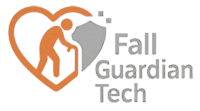Meta Description: Discover why regular health screenings are vital for fall prevention in elderly populations. Learn key tests for vision, bone density, balance & more.
Keywords: fall prevention, elderly health, osteoporosis screening, balance exercises, senior check-ups
Why Regular Check-ups Matter: Comprehensive Monitoring for Fall Prevention
Regular health check-ups are essential for seniors to maintain well-being and prevent falls. These examinations provide critical insights into underlying health risks and enable proactive interventions to enhance safety and quality of life.
Key Check-up Components and Their Impact
1️⃣ Vision Tests: Ensuring Clear Sight
Regular eye exams and properly prescribed glasses prevent missteps caused by blurred vision. Clarity reduces tripping hazards and improves navigation in low-light environments.
2️⃣ Hearing Assessments: Environmental Awareness
Correctly fitted hearing aids help detect auditory cues (e.g., approaching vehicles or alarms), crucial for avoiding accidents. Annual hearing checks are recommended.
3️⃣ Bone Density Scans: Combating Osteoporosis
Dual-energy X-ray absorptiometry (DXA) tests identify osteoporosis early. With fragile bones increasing fracture risks by 300%, supplements or medications like bisphosphonates may be prescribed to strengthen bones.
4️⃣ Blood Pressure & Glucose Monitoring
- Hypertension: Sudden dizziness from blood pressure spikes increases fall likelihood. Regular monitoring and medication adjustments maintain stability.
- Diabetes: Nerve damage (neuropathy) and hypoglycemia disrupt balance. Controlled blood sugar preserves sensation and coordination.
5️⃣ Balance Capability Evaluation
Tests like the Timed Up-and-Go (TUG) assess fall risk:
- Stand from a chair → Walk 3 meters → Turn → Return → Sit down.
▶️ Result ≥12 seconds indicates high fall risk.
Solution: Tai Chi or balance exercises 3x/week improve stability by 40%.
Integrating Check-ups into Holistic Fall Prevention
| Approach | Actions | Impact |
| Environmental Safety | Bathroom grab bars, non-slip flooring, clutter removal | Reduces 70% of home falls |
| Lifestyle Adjustments | “Three 30-Second Rules” when rising; leg-strength training | Prevents positional dizziness |
| Medication Review | Auditing sedatives, antihypertensives, and diuretics | Minimizes drug-induced dizziness |
Post-Fall Protocol: Do’s and Don’ts
If a fall occurs:
- ❌ Do NOT rush to stand (risk of re-injury).
- ✅ Assess injuries: Check for pain/swelling.
- ✅ Use “Seven-Step Rise”: Roll to side → Push to hands/knees → Support with furniture.
- ✅ Seek medical evaluation even if uninjured—hidden fractures or concussions may exist.
Conclusion: Empowerment Through Proactive Care
Regular screenings transform fall prevention from chance to science. By prioritizing vision, bone health, balance, and chronic disease management, seniors gain years of confident mobility. Families and communities play vital roles in supporting accessible check-ups and age-friendly environments.
